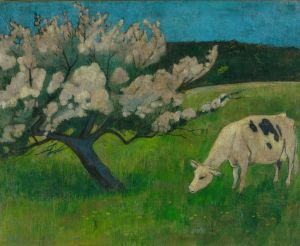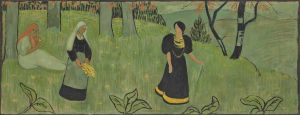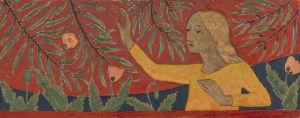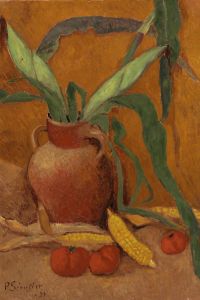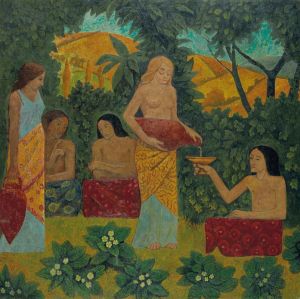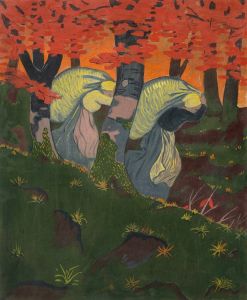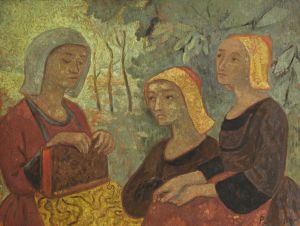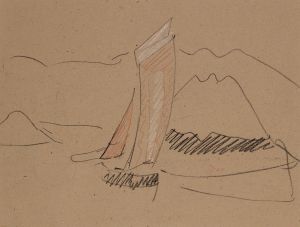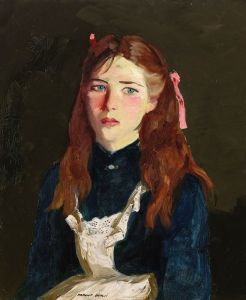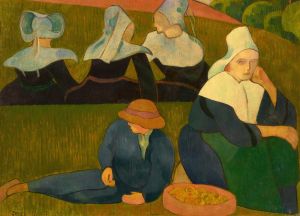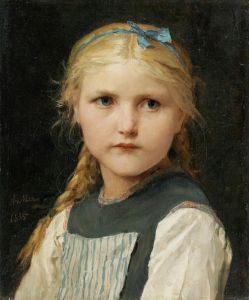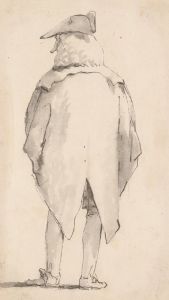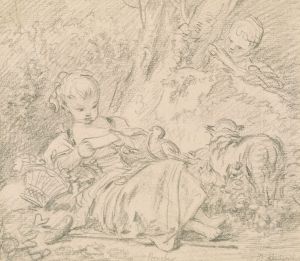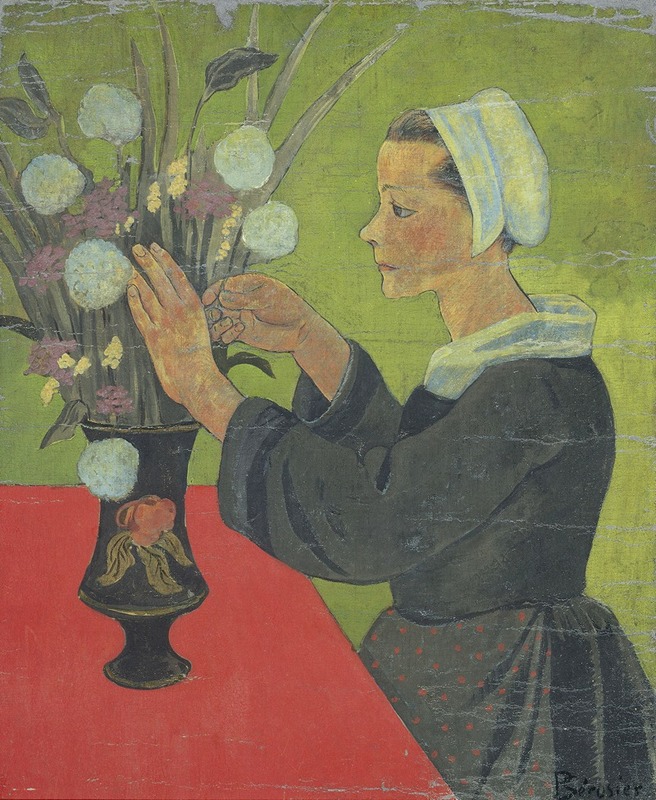
Bretonne au bouquet
A hand-painted replica of Paul Sérusier’s masterpiece Bretonne au bouquet, meticulously crafted by professional artists to capture the true essence of the original. Each piece is created with museum-quality canvas and rare mineral pigments, carefully painted by experienced artists with delicate brushstrokes and rich, layered colors to perfectly recreate the texture of the original artwork. Unlike machine-printed reproductions, this hand-painted version brings the painting to life, infused with the artist’s emotions and skill in every stroke. Whether for personal collection or home decoration, it instantly elevates the artistic atmosphere of any space.
"Bretonne au bouquet" is a painting by the French artist Paul Sérusier, a prominent figure in the Post-Impressionist movement and a key member of the group known as Les Nabis. Sérusier is best known for his innovative use of color and form, which were influenced by his interactions with Paul Gauguin and his experiences in Brittany, a region in northwestern France.
The painting "Bretonne au bouquet" exemplifies Sérusier's interest in depicting the people and landscapes of Brittany, a theme that was central to his work. The title translates to "Breton Woman with a Bouquet," indicating the subject of the painting is a woman from Brittany holding a bouquet of flowers. This focus on Breton subjects was common among artists of the Pont-Aven School, a group of painters who were inspired by the rural and traditional life of Brittany.
Sérusier's style in this painting reflects the influence of Gauguin, particularly in the use of bold, flat colors and simplified forms. This approach was part of a broader movement away from the naturalism of Impressionism towards a more symbolic and abstract representation of reality. The Nabis, of which Sérusier was a founding member, sought to integrate art into everyday life and believed in the spiritual and symbolic power of color and form.
The composition of "Bretonne au bouquet" likely features a harmonious arrangement of colors and shapes, typical of Sérusier's work during this period. The use of color is not merely descriptive but is intended to evoke an emotional response and convey a deeper meaning. This aligns with the Symbolist movement, which sought to express the unseen and the spiritual through art.
Sérusier's time in Brittany was pivotal in his artistic development. It was during a visit to Pont-Aven in 1888 that he painted "The Talisman" under the guidance of Gauguin, a work that became a manifesto for the Nabis. This experience solidified his commitment to a new artistic direction, characterized by a departure from realistic representation and an embrace of abstraction and symbolism.
While specific details about "Bretonne au bouquet" such as its exact date of creation, current location, and dimensions are not widely documented, the painting remains an important example of Sérusier's work and his contribution to the Post-Impressionist movement. It reflects his ongoing exploration of color theory and his desire to capture the essence of his subjects through innovative artistic techniques.
Overall, "Bretonne au bouquet" is a testament to Paul Sérusier's role in the evolution of modern art, illustrating his ability to blend the influences of Gauguin and the Pont-Aven School with his unique vision. Through his work, Sérusier helped pave the way for future developments in abstract and symbolic art, leaving a lasting impact on the trajectory of 20th-century painting.





